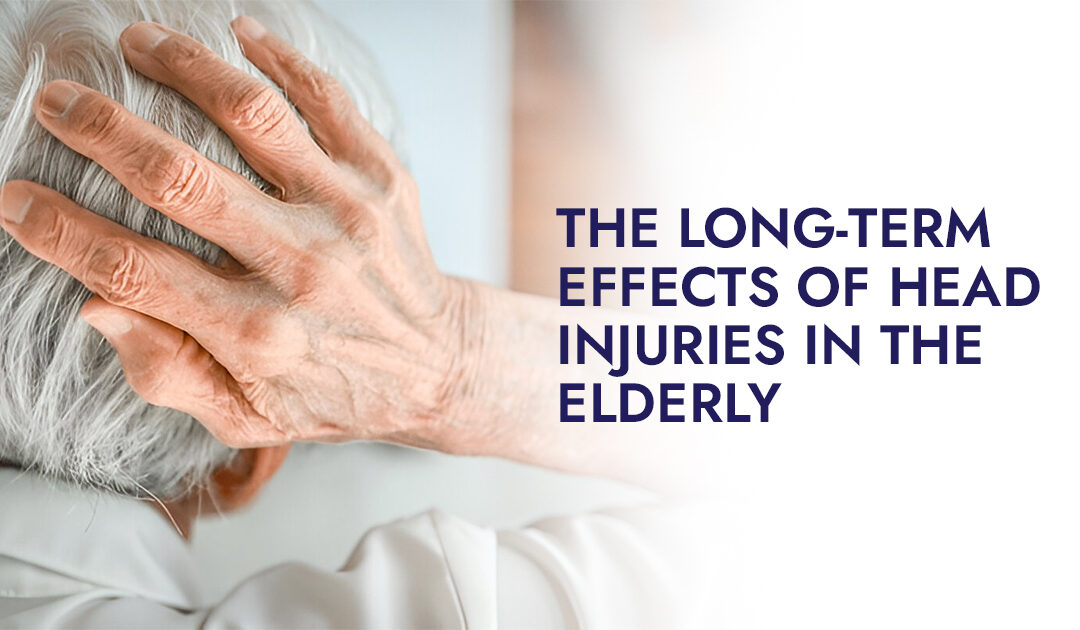Head injuries, caused by falls or accidents, may have a severe and lasting impact. Due to their frail bodies and multimorbidity, elderly patients are more prone to falling and slipping, and head injuries are a common complaint among them.
Traumatic brain injury (TBI) is the result of a violent blow or jolt to the head or body. It could also be caused by an object passing through the brain tissue such as a bullet or shattered piece of skull. The severity can range from mild to severe, affecting both physical and cognitive. In mild damage, the brain cells get affected temporarily. If severe and traumatic, brain injury can consist of bruising, torn tissues, bleeding and other damage to the brain. This kind of injury is likely to result in long-term complications and even death.
What Are the Symptoms of Brain Injury?
Traumatic brain injury has a varying range of physical and cognitive effects. While some signs and symptoms appear immediately post-traumatic event, others eventually appear after a few days or weeks.
Let us classify the symptoms into three kinds: physical, sensory and cognitive to encompass the different effects.
1. Mild Traumatic Brain Injury
In mild traumatic brain injury, the signs and symptoms may include:
- Physical symptoms
- Head pain
- Feeling sick or throwing up
- Tiredness or sleepiness
- Issues with speech
- Lightheadedness or difficulty with balance
2. Sensory symptoms
- Blurry vision,
- Buzzing in the ears
- An unpleasant taste in the mouth
- Alterations in the sense of smell
- Sensitivity to brightness or noise
3. Cognitive, behavioral or mental symptoms
- Loss of awareness for a brief period of seconds to several minutes
- No loss of awareness, but a feeling of being bewildered, puzzled, or disoriented
- Problems with memory or focus
- Changes in mood or emotional fluctuations
- Experiencing feelings of sadness or worry
- Trouble falling asleep
- Sleeping more than normal
2. Moderate to Severe Traumatic Brain Injury
In moderate to severe traumatic brain injury, the signs may show eventually, either within the first hours or days post the event of the head injury.
1. Physical symptoms
- Loss of consciousness lasting from several minutes to several hours
- Chronic headache or headache that intensifies
- Continuous vomiting or nausea
- Convulsions or seizures
- Enlargement of one or both eye pupils
- Transparent fluids leaking from the nose or ears
- Inability to be roused from sleep
- Weakness or numbness in the extremities
- Loss of motor coordination
2. Cognitive or mental symptoms
- Severe confusion
- Restlessness, aggressiveness, or other abnormal behaviors
- Slurred speech
- Coma and other consciousness-related disorders
Physiological Changes and Head Injury Risk in the Older Adults:
Aging in the brain causes older patients to experience hemorrhagic complications of head injury. Let us understand how brain injuries can impact older adults.
1. Cerebral Atrophy:
With advancing age, the brain undergoes a natural process of shrinkage. This phenomenon can result in enlarged spaces within the skull, which increases the brain’s susceptibility to bleeding, particularly in the case of subdural hematomas. It may require a larger volume of blood to exert significant pressure on the brain.
2. Hypertension:
Elevated blood pressure places additional strain on blood vessels, thereby heightening the risk of aneurysms and ruptures, especially within the brain. This condition can lead to subarachnoid hemorrhage.
3. Impaired Cerebral Autoregulation:
A diminished capacity to regulate blood flow to the brain can result in a decreased supply of oxygen, making the brain more vulnerable to injury.
4. Cerebrovascular Atherosclerosis:
The hardening of arteries within the brain can further compromise blood flow and escalate the risk of stroke.
5. Increased Monoamine Oxidase B (MAO-B):
MAO-B is an enzyme responsible for producing potentially harmful free radicals. Elevated levels of MAO-B can inflict damage on brain cells and diminish the brain’s resilience to injury.
6. Mitochondrial Aging:
Mitochondria, which serve as the energy powerhouses of cells, tend to become less efficient as we age. This decline can hinder the brain’s ability to recover from injuries.
7. Reduced Superoxide Dismutase (SOD):
SOD functions as an antioxidant that protects cells from damage. A reduction in SOD levels can render the brain more susceptible to oxidative stress and injury.
8. Increased Superoxide Production:
Superoxide is a harmful free radical that can contribute to cellular damage and further increase the risk of brain injury.
How to Prevent Falls in the Elderly?
To prevent falls and head injuries in the elderly, make sure to incorporate:
- Regular eye exams
- Regular exercise
- Home safety assessments
- Use of assistive devices
Consult with a healthcare provider to ensure that your loved one can take the necessary precautions to minimize the risk for head injuries.

